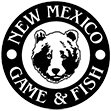New Mexico Department of Game and Fish
Media contact: Dan Williams, (505) 476-8004
Public contact: (505) 476-8000
dan.williams@state.nm.us
FOR IMMEDIATE RELEASE, OCT. 1, 2007:
KOKANEE SNAGGING SEASON OPENED MONDAY AT 4 NEW MEXICO LAKES
NAVAJO DAM -- Dozens of anglers with stiff rods and weighted hooks lined the shores of Navajo Lake early Monday for opening day of kokanee salmon snagging season.
"We haven't seen any limits yet, but people are out there right now casting and catching," said Aaron Martinez, manager of Navajo Lake State Park. "We expect the action will pick up as the weather gets cooler."
Kokanee salmon season runs from Oct. 1 through Dec. 31 at Navajo, Eagle Nest, Abiquiu and El Vado lakes. Snagging season at Heron Lake opens Nov. 10 and runs through Dec. 31. Bag limits are 12 salmon per day and 24 in possession. All salmon fishing is closed at Heron Lake from Oct. 1 to Nov. 9 while Department of Game and Fish crews net fish and collect eggs, which are incubated at Los Ojos Hatchery and stocked back into the lakes.
Kokanee are landlocked Pacific sockeye salmon and are well-suited for New Mexico's large northern reservoirs. The fish swim in compact schools, feeding mostly on zooplankton. In their third or fourth year, 15- to 18-inch males develop hooked jaws and turn brick red, and females turn red-gray-white during the fall spawning season. Some kokanee attempt to ascend tributary streams, but most cruise the shoreline in large schools where they try to spawn, and then die. Kokanee do not eat once they begin spawning, so the best time to harvest them is early in the spawning run when they are still fat and firm.
The Department allows anglers to use snagging hooks to harvest the soon-to-die mature fish. Any other fish species caught while snagging must be immediately returned to the water. All kokanee anglers must have valid licenses. Entry to Navajo, El Vado, Heron and Eagle Nest state parks is $5 a day per vehicle.
In the past four years, the Department stocked 5.5 million kokanee fry in Navajo Lake and 2 million each in Heron and Eagle Nest lakes. In 2006 and 2007, 800,000 kokanee fry were stocked in El Vado Lake and 400,000 were stocked in Abiquiu Lake. Approximately 80 percent of those kokanee are hatched from eggs collected each year at Heron Lake.
###

